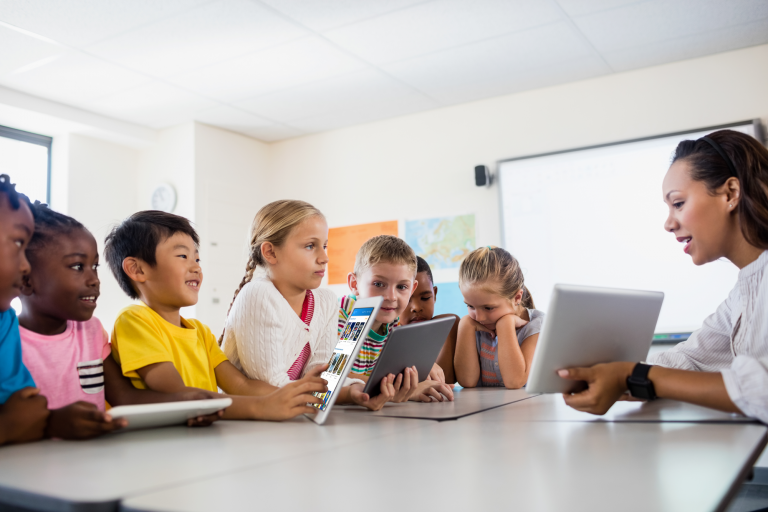Categories:
- The Spanish educational system has evolved over the last fifty years in the search for a closer, more personalized digital education model. The trend is towards competency-based learning based on European directives.
- The use of new technologies that allow students to access teaching content through digital channels is gaining strength in today’s education.
- In addition, the new education transcends outside the classroom, as both students and teachers have access to unlimited and personalized digital learning ecosystems, where they can find the resources they want and need.
The educational model in Spain has changed substantially in the last 50 years. According to data from the latest register of the Ministry of Education, our country had more than 795,000 general education teachers in 2020, an increase of 75% compared to the 450,000 teachers in the last three decades.
As a result of this atmosphere, so conducive to change, the educational model and thus teachers have undergone a metamorphosis. In the 1960s, the archetype of the teacher was that of a scholar who, as an extension of the parents, exercised considerable authority among the students. Those were times when the educational system was governed by the importance of acquiring knowledge and skills through methods based on repetition and memorization. In the 1990s, the perspective began to shift towards learning processes and tools, and the focus shifted away from knowledge alone.
Since then, society’s progress has affected this profession in which the social and vocational essence have always been crucial. Now we consider teachers guides, while the student takes center stage. Now it is the students who acquire knowledge in different ways, when in the past it was the teacher who was most responsible for imparting it. So, what should a teacher do if someone else can share knowledge with their students? Well, guide and set up situations in which students can build their learning actively. This is the role of the teacher in this digital era.
On the road to reinventing the teacher, the personalization of content, the promotion of creativity and participation are key issues. This is a challenge for which new technologies are the great solution, as pointed out in Component 19 of the Government’s Recovery, Transformation and Resilience Plan. As opposed to the traditional methodology of passive listening and learning based on retention, the new path is committed to promoting active learning in which teamwork and problem solving based on real situations encourage a better assimilation of content and focused on the student.
New education methodologies: unlimited learning ecosystems
This is the context in which disruptive offers such as ODILO can thrive. The scale-up from Cartagena has put a new way of understanding education on the horizon: unlimited learning ecosystems. Their success lies in providing teachers with multi-format resources, experiences, and customized learning programs, as well as allowing them to measure when and how each of their students learns. This allows teachers to complement their teaching and adopt a 360-degree approach to their students’ learning.
“If we can’t access quality content, our learning will be limited. And if we don’t have the support of technology and key people, it will be difficult for us to move forward and become the best version of ourselves,” says Alberto Abel, ODILO representative.
ODILO offers more than 3.9 million titles – the largest digital educational catalog in the world – including ebooks, courses, videos, magazines, press, educational resources, summaries, movies, and educational apps in 43 different languages, with which teachers can guide students in their education in a more personalized way.
This innovative understanding of what education is has more than 170 million users in 52 countries, where the platform not only provides its services to educational centers, but also to large multinationals and public administrations.
“We have a vision of enabling any organization to deliver unlimited learning without friction, in the most efficient way and generating maximum value,” adds Sesmero.
Likewise, this type of platform allows teachers to develop collaborative materials so that students can work cooperatively. They test their teamwork, which is one of the so-called ‘soft skills’ that are in high demand in today’s job market.
More innovation for classrooms that blur boundaries
Completing the transformation of the education system towards more digital forms of learning also involves the renovation of classrooms. Blackboards and chalk, as well as even books and pens, are giving way to new technologies such as digital screens, tablets, and virtual reality devices. These tools allow students to experience the educational process in an immersive way, thus promoting greater assimilation of content.
Education in the 21st century is experiencing a moment of reinvention in which the transmission of knowledge transcends the tradition of books and classroom attendance. A new way of learning in which new technologies are put at the service of a more digital teacher who finds in the personalization of its contents a more effective way for students to assimilate a now unlimited knowledge.
